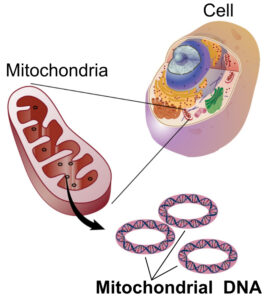XXYY syndrome is a chromosomal disorder defined by the presence of an extra X and Y chromosome in men and is associated with medical and behavioral issues. XXYY is a form of Klinefelter syndrome at age 48.
Inheritance
The condition 48, XXYY is not inherited; it often arises by chance during the development of reproductive cells (eggs and sperm). Nondisjunction is a mistake in cell division that results in reproductive cells with an incorrect number of chromosomes. The extra sex chromosomes in 48, XXYY syndrome nearly often originate from sperm cells. Nondisjunction may lead sperm cells to receive two additional sex chromosomes, resulting in three sex chromosomes per sperm cell (one X and two Y chromosomes). If this sperm cell fertilizes a normal egg cell with one X chromosome, the subsequent child will have two X chromosomes and two Y chromosomes in every cell in his body.
In a rare number of instances, 48, XXYY syndrome is caused by the nondisjunction of the sex chromosomes in a 46, XY embryo shortly after fertilization. This indicates that a normal sperm cell with one Y chromosome mated a normal egg cell with one X chromosome, but immediately following fertilization, nondisjunction of the sex chromosomes led the embryo to obtain two additional sex chromosomes, resulting in a 48, XXYY embryo.
Symptoms and signs
- Developmental delays
- Speech delay or impairment
- Tall, taking into account family history
- Outbursts of behavior and mood swings
- Learning disabilities
- Intellectual impairment
- ADD or ADHD indications
- Autistic, autism spectrum, PDD-NOS
- Scoliosis
- Clinodactyly (Curved-in pinky fingers)
- Weak muscular tone
- Flat feet/hammertoes
- Sterility
- Sexual development delay
- Testicles that have not descended
- low or nonexistent testosterone
- Dental troubles
- Leg ulcers
- Heart conditions (i.e., VSD)
Diagnosis
To diagnose 48, XXYY, a genetic test called a karyotype is required. The test is performed by collecting blood and analyzing the blood cells to identify the chromosomal makeup of the kid or man.
Treatment
To diagnose and manage the accompanying developmental, physiological, and psychological disorders, multidisciplinary care is essential. To evaluate for congenital abnormalities, a comprehensive physical exam, renal ultrasonography, and echocardiography should be conducted. Lifelong vision/hearing tests and routine dental treatment are essential. Comorbidities, such as asthma and epilepsy, should be identified and treated in the same manner as they would be for patients without 48, XXXY.
Beginning at the age of 10, pubertal exams and blood hormone profiles should be examined, and testosterone therapy should be explored for hypogonadism. Beginning in adolescence, annual screenings for hyperlipidemia, diabetes, and autoimmune thyroid disease are advised. Throughout childhood, a comprehensive, multidisciplinary neurodevelopmental and behavioral examination is required. Individualized, evidence-based interventions should target psychological functioning (including emotional and behavioral problems) and speech/language, motor, and self-care abilities. School- and community-based services and supports are regularly included into treatment plans.
Prognosis
Patients have a life expectancy that is generally normal but requires routine medical monitoring.
For more info, visit: https://thefocusfoundation.org/x-y-chromosomal-variations/xxyy/



